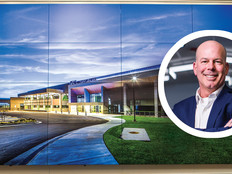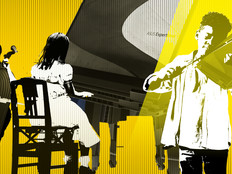We're Recording
Videotaping a lesson or experiment has numerous benefits for students and teachers.
Want to drive a lesson home while making sure your class is the highlight of a student’s day? All you have to do is start the period by announcing: “Today, you are going to be a movie star.” I’ve learned that having students make a movie while they work through a lesson prevents them from overthinking the mechanics of the experiment and helps reinforce the lesson’s real goal. The hands-on nature of creating a video also ensures that students remember this lesson well past the date of their next test.
Lesson Description
My class uses the Fujitsu LifeBook U810 convertible mini-notebook to capture video on lessons that range from science experiments to simple demonstrations. Students then share their work with peers, in or outside the classroom. The experiments that can be recorded range from a simple paper-tower project to a more sophisticated electrical quiz board.
In the paper-tower project, students have a limited amount of newspaper (two sheets) and tape (12 inches) to create the tallest free-standing structure possible. It is a good lesson on trial-and-error, and facilitates working with partners. In the quiz board project, students take holiday lights, batteries and an old shoebox to create simple and parallel circuits. The quiz boards are designed to light up if they correctly answer quiz questions, and stay dark if they answer incorrectly. Have the students record the experiment (or project) while they explain the significance of each step along the way.
After careful preparation and some rehearsal, the student is ready to record. They should find a nice, quiet spot (usually the hallway) that is well lit, set the mini on a secure surface, microphone in hand, and push record. If the recording is a re-enactment of an experiment and involves moving the position of the camera, then a second or third person may be required. Not only does recording and presenting strengthen students’ knowledge of the subject and objective, it builds speaking skills and confidence. In addition, it allows a successful lesson to be shared with other teachers, students and even parents. Absent students can catch up on what they missed by viewing the videos.
Subject Area
This lesson was designed for a middle school science class, but could be modified to suit any subject or grade level.
Curriculum Standards
This project addresses these National Educational Technology Standards for students
- Students use technology tools to enhance learning, increase productivity and promote creativity.
- Students demonstrate a sound understanding of technology concepts, systems and operations.
- Students apply digital tools to gather, evaluate and use information.
This lesson also addresses the Ohio Academic Content Standards for Science:
- Describe and illustrate the design process.
- Revise an existing design used to solve a problem based on peer review.
- Evaluate observations and measurements made by other people and identify reasons for any discrepancies.
- Use evidence and observations to explain and communicate the results of investigations.
- Explain why the results of an experiment are sometimes different.
Resources
A mini-computer with video-editing software; a TV that will play digital video from a computer; an interactive whiteboard; microphones; and a quiet area.
Grading Rubric
This lesson can be used as an extension of any demonstration or laboratory experiment. Grading of the lesson will differ based on the particular experiment, but it should focus more on the lesson learned than the students’ ability to master the technology.
Teaching Tips
- First, familiarize students with the video capabilities of the computer.
- Review basic filming techniques:
a. Keep the video camera still.
b. Direct people to talk into the microphone.
c. Ensure there is proper lighting. - Prepare guiding questions that need to be addressed during the video that relate to the experiment.






